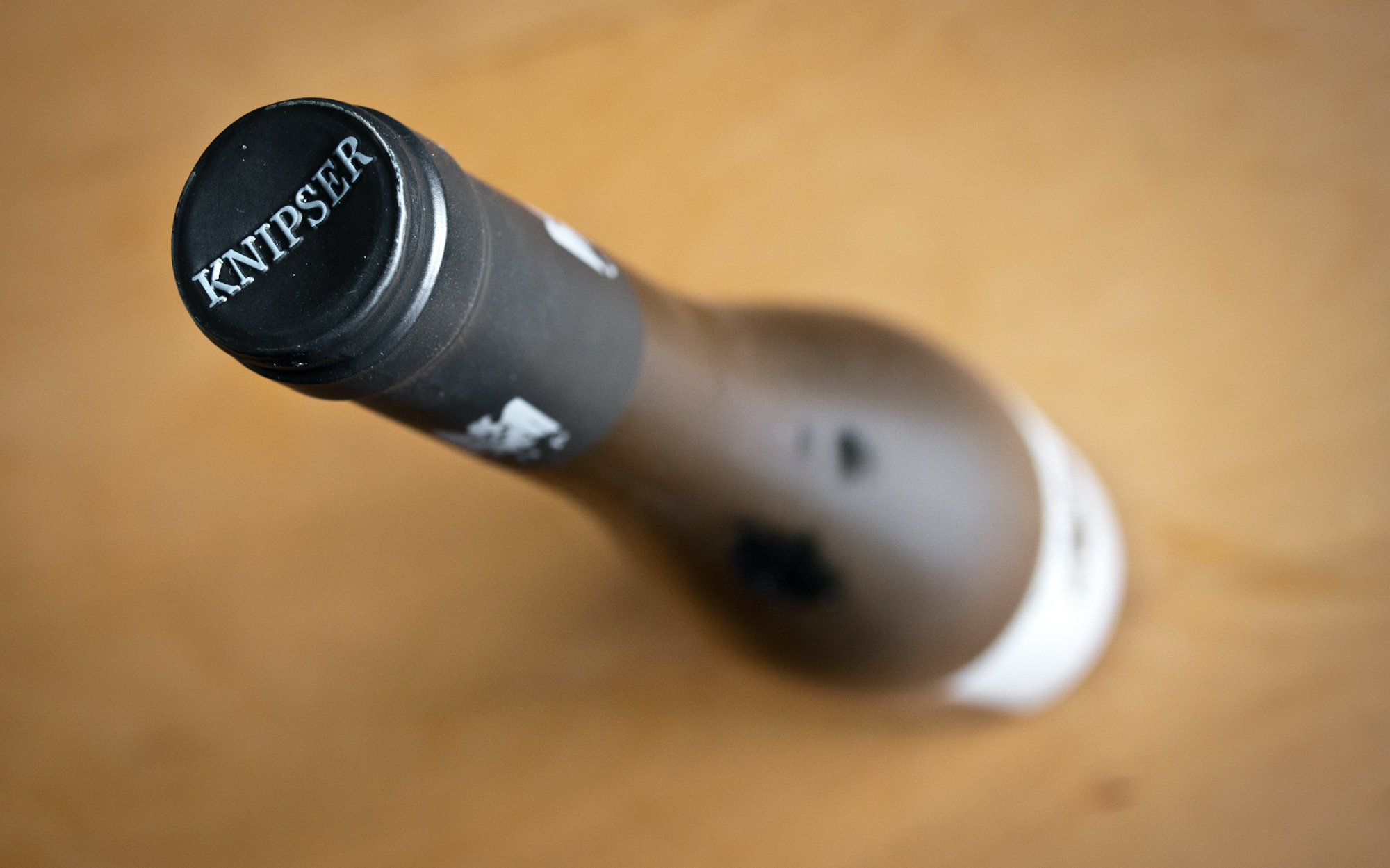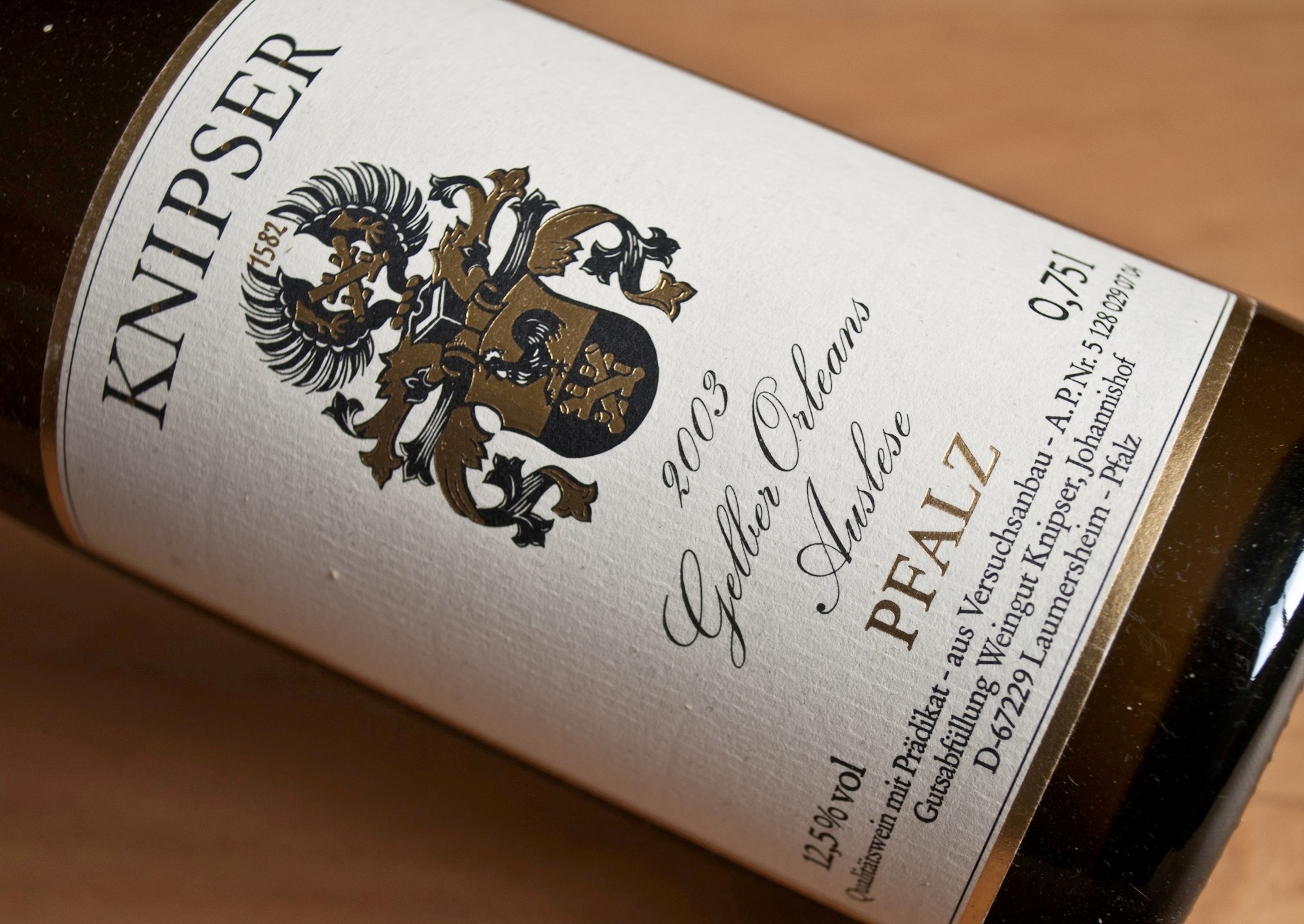Knipser, Gelber Orleans Auslese, 2003
You haven't heard of Gelber Orleans? Not even a vague idea what it might be? Despair not, it is hardly a well known grape variety. In fact, it has become so obscure - even in Germany - that when I recently invited a well versed wine blogger over to try it I was confident she would not be able to identify it.

When serving the wine I made sure that the only thing she might have caught a glimpse on was the name and logo of the winery - identifying the producer as Knipser, one of the most accomplished in Germany. So, gentle reader, explore a wine with us which you will most certainly not have experienced before.
Let's start visually, with a wonderful and clear yellow colour that is the first promise of more exciting things to come. Next we put our noses into the Riedel glasses to find a bouquet that at first is a little reserved, but slowly opens up beyond the initial apple, apricot and waxiness to show more fruit (hints of citrus and pineapple, almost overripe peach), a hint of oak spice and slatey mineral. Subtle yet very promising.
When we tasted it, the initial impression was one of aged Riesling, sans petrol notes, with very juicy fruit, a hint of sweetness and really impressive acidity, all laid out on lots of mineral. With its delicious honey notes it could also have passed as a Semillon, and my guest, the Winesleuth would not even want to rule out Grüner Veltliner or an oak aged Pinot Gris or Blanc. Even though there is a lot going on on your tongue - almond, bitter orange marmalade and a certain oily quality should also been mentioned - the wine is focussed and well integrated. Tight but not heavy. The impressive finish exposes your gum to several layers of taste: juicy, peppery, lots of smoky (bacon) mineral with tingly lemon and fruit candy.
Delicious, that much the Winesleuth was certain of. The grape though remained a mystery to my guest after she had named pretty much all white German varieties she knew of. Eventually, Denise capitulated as she describes in her blog post on the mystery wine. When I revealed it as "Gelber Orleans" that caused more question marks to appear in her eyes.

So what is it with this "Gelber Orleans"? It is actually a very old variety, probably going back to the times of Charlemagne; its "German" history seems to start with monks in the 12th century. "Gelb" means "yellow" in German, and "Orleans" is one of the indications that the variety originated in France. It was reasonably popular in Germany up until the 19th century, but eventually Riesling superseded it. So much so that it practically disappeared and had to be recultivated in the 1980s.
A very late ripening variety, Gelber Orleans even in warm years has lots of acidity and is best grown in top vineyards on soil that retains heat easily to keep the vines warm over night. Good vintages can last for ages - in 1988 what may have been the last surviving bottles of Gelber Orleans were auctioned (the 1920 and 1921 vintages), and tasters noted that because of the good acidity and substance most of the wines still seemed very much alive.
Orleans is only found in minuscule quantities, for instance in the experimental vineyard of the Knipser family. It is a shame that we don't see more of it, because the 2003 vintage for me is not only the most unusual, but also one of the best Knipser wines I have ever had. Especially for such a fair price (recent vintages are not much more expensive) it can compete with many of the world's top white wines.
